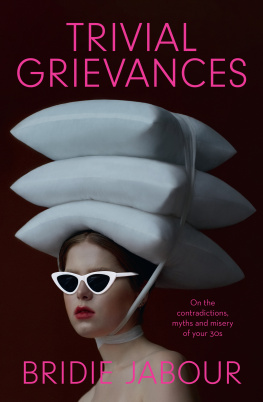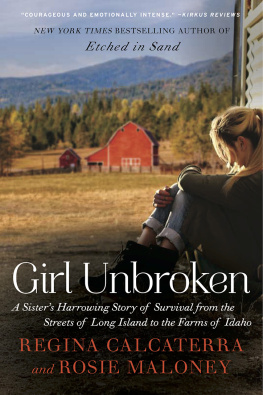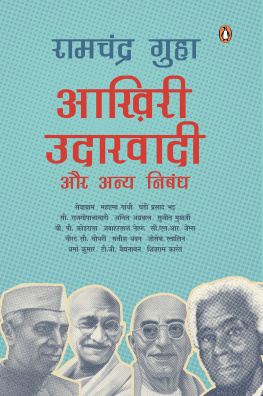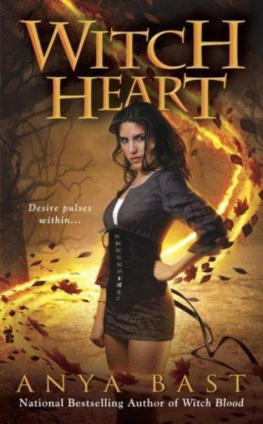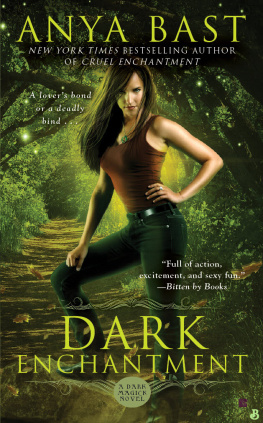2007 The University of North Carolina Press
All rights reserved
Manufactured in the United States of America
Designed by Kimberly Bryant
Set in Quadraat by Tseng Information Systems, Inc.
The paper in this book meets the guidelines for permanence and durability of the Committee on Production Guidelines for Book Longevity of the Council on Library Resources.
Library of Congress Cataloging-in-Publication Data
Jabour, Anya.
Scarletts sisters : young women in the Old South / Anya Jabour.
p. cm.
Includes bibliographical references and index.
ISBN-13: 978-0-8078-3101-4 (cloth : alk. paper)
1. Young womenSouthern StatesSocial conditions19th century. 2. Sex roleSouthern StatesHistory19th century. 3. Southern StatesSocial conditions19th century. 4. United StatesHistoryCivil War, 18611865Social aspects. I. Title.
HQ1438.S63J33 2007
305.2422097509034dc22
2006028929
11 10 09 08 07 5 4 3 2 1
Portions of Chapter 2 appeared previously in College Girls: Community and Identity in the Antebellum South, in Lives Full of Struggle and Triumph: Southern Women, Their Institutions and Their Communities, ed. John Salmond and Bruce Clayton (Gainsville: University Press of Florida, 2003), 7492. Portions of Chapter 3 appeared in It Will Never Do for Me to Be Married: The Life of Laura Wirt Randall, 18031834, Journal of the Early Republic 17 (Summer 1997): 193236, and Resisting the Altar: A Case Study of Conversion and Courtship in the Antebellum South, Maryland Historical Magazine 96, no. 1 (Spring 2001): 2951. Portions of Chapters 2 and 6 appeared in Albums of Affection: Female Friendship and Coming of Age in Antebellum Virginia, Virginia Magazine of History and Biography 107 (Spring 1999): 12558. All are reprinted with permission of the publishers.
Illustrations
Life & Age of Woman
Heel and Toe
Frontispiece from Anna Rosalie Quitmans journal
Violet Blair before and after her official debut
Our Rules for This Summer
Georgia Female College Report
St. Marys School Report
Plan of our dormitory
Room No. 5
Autograph book
An 1858 entry from Loula Kendalls journal
An 1831 entry from Catharine Wirts diary
An 1827 entry from Catharine Wirts diary
An 1856 entry from Anna Rosalie Quitmans journal
A sketch from Loula Kendalls journal
Popping the Question
Loula Kendall Rogers
The bride comes forth
Marriage certificate
The Young Housekeepers the Day after Marriage
The Young Housekeepers a Year after Marriage
The Happy Mother
An 1862 entry from Sarah Morgans diary
Confederate belles
Civil War Baton Rouge
Acknowledgments
This book has been more than ten years in the making, and I have accumulated professional and personal debts that can never be repaid but must be acknowledged. I am grateful to the helpful and knowledgeable staff at the Southern Historical Collection, the Maryland Historical Society, the Virginia Historical Society, the South Carolina Historical Society, the Center for American History, Emory University, the Special Collections Library at Duke University, and the Interlibrary Loan Department at the University of Montana for their invaluable assistance. A Mellon Research Fellowship from the Virginia Historical Society and a Womens Studies Research Grant from Duke University helped to defray the expenses of research in their archives; several grants from the Department of History and the University Grant Program at the University of Montana made it possible to purchase several valuable collections on microfilm, as well as to conduct research at the Southern Historical Collection, Emory University, and the South Carolina Historical Society.
Meeting fellow travelers is one of the greatest pleasures of conducting research in far-flung archives. I would like to express my appreciation for the many people who showed an interest in my work and guided me to relevant sources, including Dwayne Cox, who provided me with photocopies of the Whitfield Family Papers at Auburn University; Mary Carroll Johansen, who introduced me to the Carrington Papers at the Virginia Historical Society; Gitte Nielsen, who photocopied Sarah Lois Wadleys diary for me; and Tammy Whitlock, who gave me an undated essay titled Womanhood, salvaged from an estate sale and a Little Southern Belle paper doll for inspiration.
At professional conferences sponsored by the Southern Historical Association, the Society for Historians of the Early American Republic, the Southern Association for Women Historians, and the Society for the History of Children and Youth, I have benefited from the encouragement, insight, and criticism of other scholars working on related topics. I would like to acknowledge helpful exchanges with Emily Bingham, Joan Cashin, Catherine Clinton, Cita Cook, Dan Kilbride, Charlene Boyer Lewis, Jan Lewis, James Marten, Lucia McMahon, Victoria Ott, Anne Firor Scott, Elizabeth Varon, and Tammy Whitlock. Charlene Boyer Lewis and Jane Turner Censer gave especially generously of their time and knowledge by reading the entire manuscript. I am immensely grateful to them for their comments and suggestions, as well as to the three anonymous readers who reviewed the work for the University of North Carolina Press.
Closer to home, I am grateful for the support and insights of my colleagues in the Department of History, especially Richard Drake, Linda Frey, Paul Lauren, Kenneth Lockridge, Jody Pavilack, Fred Skinner, Pamela Voekel, and Jeff Wiltse; and in the Womens Studies Program, especially Jill Bergman, Sara Hayden, and Rita Sommers-Flanagan. I also owe a debt of gratitude to my students; I am glad to say that the young women I teach have greater opportunities to enact their resistance than the young women I study. My students academic and activist achievements are a constant source of inspiration for me.
Katherine Beckley has not read a single word of this manuscript, but her influence is evident in these pages nonetheless. She has accompanied and assisted me on research trips, accommodated my writing schedule, become acquainted with the women who inhabit this book, and provided unstinting and ever-enthusiastic support throughout the process of writing it. Her presence in my life serves as a constant reminder of the continuing importance of womens relationships in contemporary America.
I can think of no more appropriate introduction to this book than to dedicate it to the women who reside in its pages. Young women in the Old South were not always admirable (or even likable) characters, but they did their best with what they had, and in the process, they left a poignant record of possibilities unexplored, alternatives foreclosed, and resistance suppressed. I hope that this story of the women who came before me will help the women who come after me to writeand livea different story.




